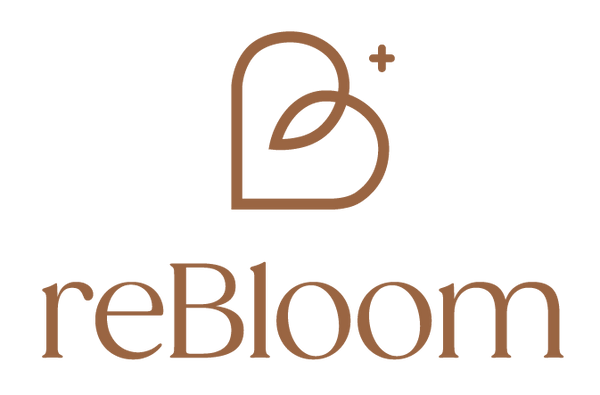
Plant power at the service of your well-being
La puissance végétale au service de votre bien-être
Discover the therapeutic properties of our plants as well as their stories.
-

OptiMum
Discover our plants -

CozyMum
Discover our plants -

WonderMum
Discover our plants
Toutes les plantes sélectionnées sont compatibles avec l'allaitement. Aucune contre-indication majeure n'est répertoriée. Cependant, il est généralement conseillé de consulter un professionnel de la santé avant d'entreprendre toute supplémentation.
La force des plantes au service des mamans
-
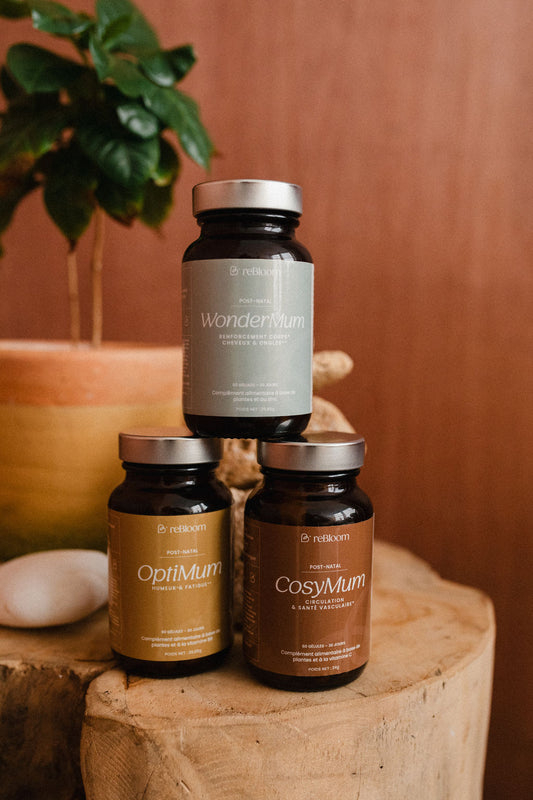
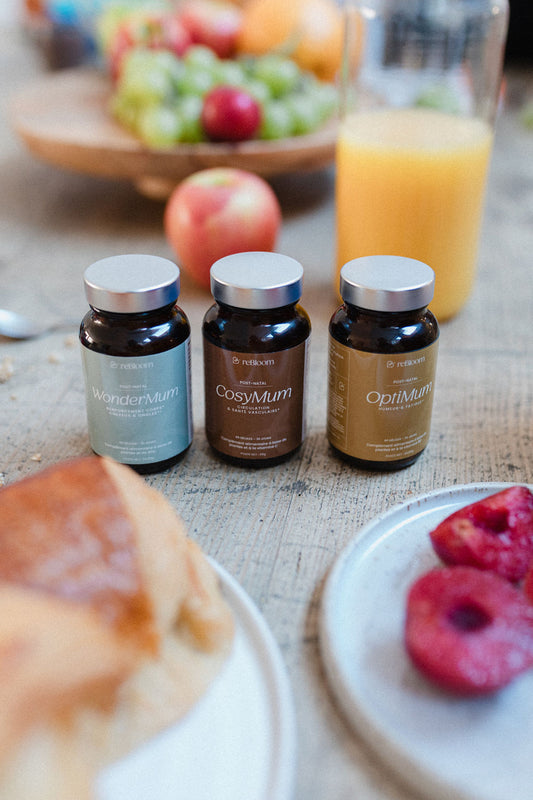 Sold out
Sold outTHE SuperMum
Vendor:Le TRIO post-partum -10%4.69 / 5.0
(56) 56 total reviews
Regular price €86,40Regular priceUnit price / per€96,00Sale price €86,40Sold out -
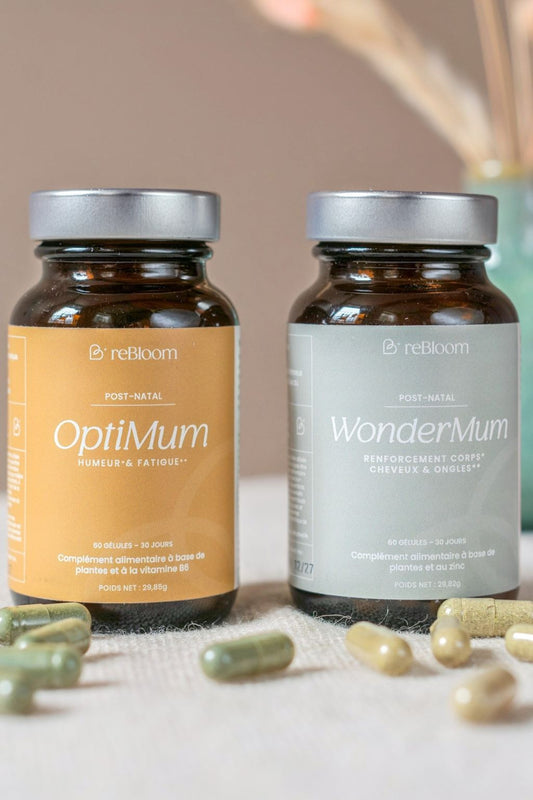
 Sold out
Sold outHairBoost+
Vendor:PACK CHEVEUX -5%4.52 / 5.0
(63) 63 total reviews
Regular price €60,80Regular priceUnit price / per€64,00Sale price €60,80Sold out -
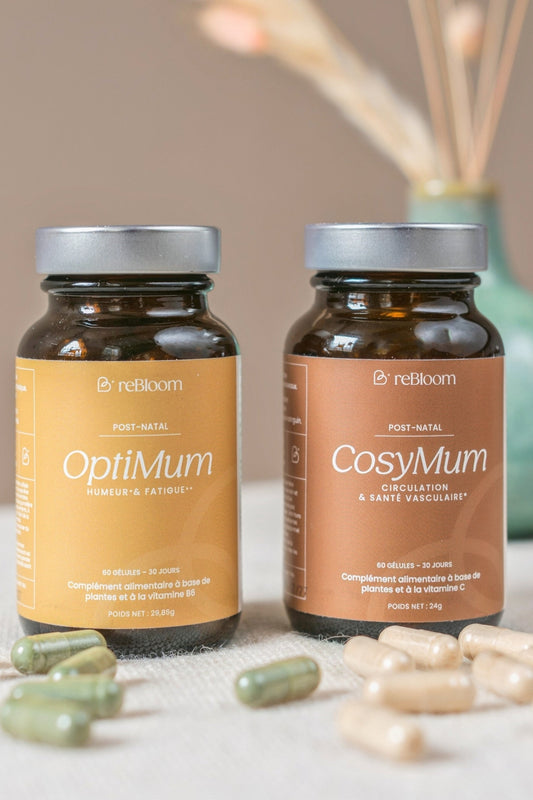
 Sold out
Sold outEnergyBoost+
Vendor:Pack Anti-Fatigue -5%4.52 / 5.0
(81) 81 total reviews
Regular price €60,80Regular priceUnit price / per€64,00Sale price €60,80Sold out -
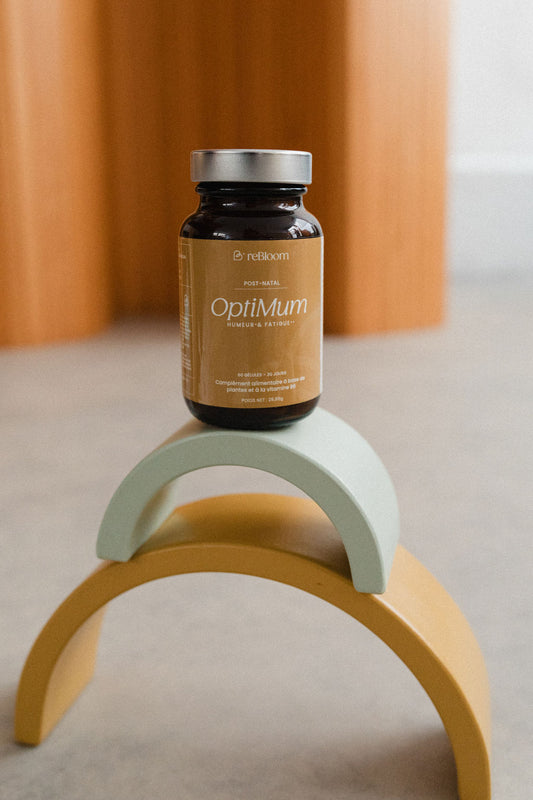
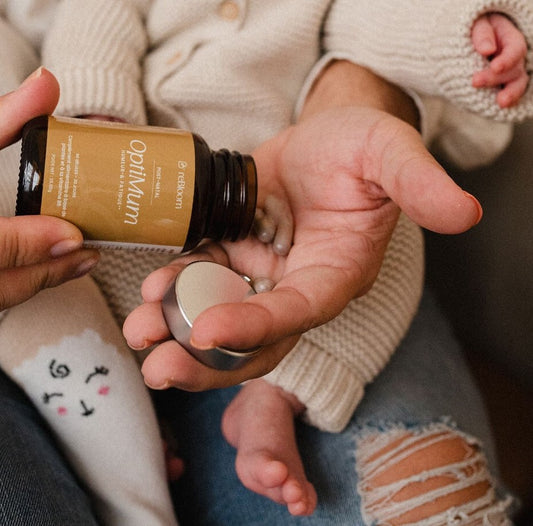 Sold out
Sold outOptiMum - Mood & Fatigue
Vendor:Je booste mon quotidien4.5 / 5.0
(75) 75 total reviews
Regular price €32,00Regular priceUnit price / per -
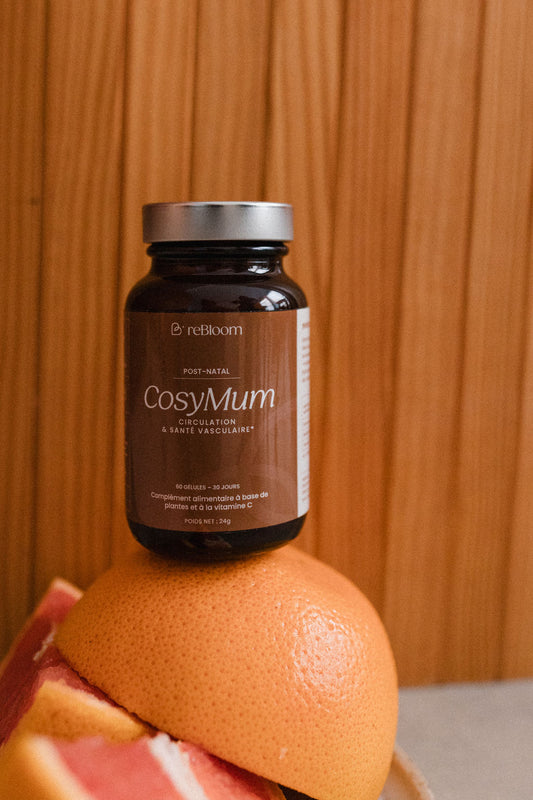
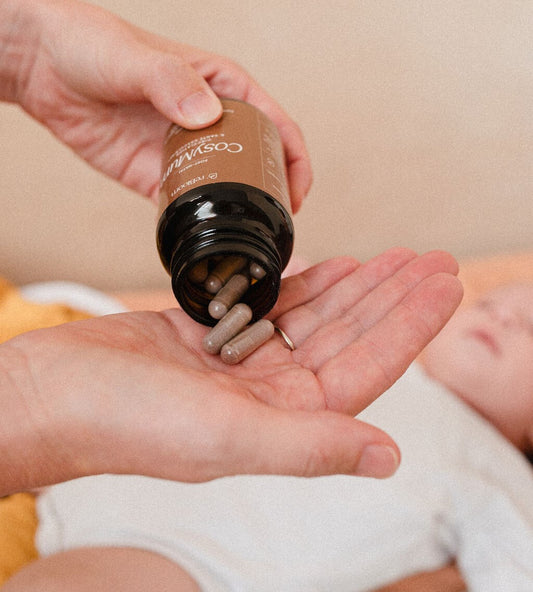 Sold out
Sold outCosyMum - Traffic
Vendor:je prends soin de moi4.61 / 5.0
(49) 49 total reviews
Regular price €32,00Regular priceUnit price / per -
WonderMum - Strengthening body, hair and nails
Vendor:Je me reconstruis4.74 / 5.0
(53) 53 total reviews
Regular price €32,00Regular priceUnit price / per
OptiMum : fatigue, stress, anxiété.
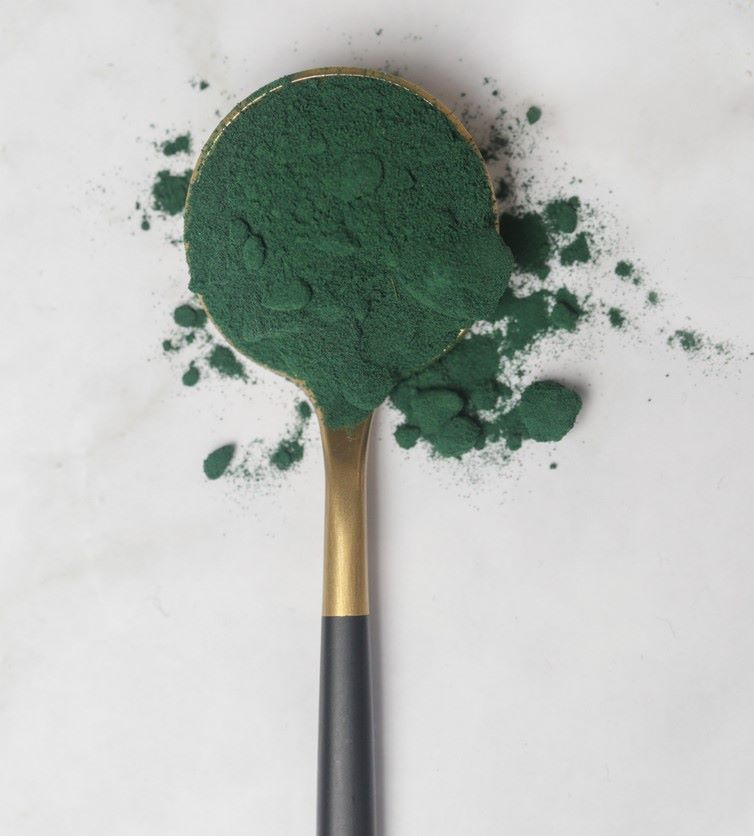
Un superaliment : la Klamath
The klamath (Aphanizomenon flos aquae or AFA), is a cyanobacteria, likened to a blue-green micro-algae.
Harvested from Klamath Lake located in Oregon, USA,
Klamath, known for its nutritional richness, is nicknamed “Algae of Regeneration ".
Collapsible content
Popular usage
The Klamath would have long been consumed by the Klamath tribe, a people of Native Americans living around the lake and the Klamath River.
Rediscovered in the 1970s, the numerous health benefits reported by Klamath consumers led researchers to study it starting in 1995.
Consumed as a superfood, it contains 60-70% protein, polyunsaturated fatty acids: Omega 6 (1.8 mg/g) and Omega 3 (12.9 mg/g). Rich in vitamins, notably B12, minerals and trace elements (zinc, manganese, iodine, chromium, boron, etc.).
Several studies have highlighted the benefits of Klamath in depressed patients: an improvement in general mental state, an increase in attention and better mood was noted. Other studies have demonstrated antioxidant properties and anti-inflammatory properties
Why we use it
It contains 60-70% protein, polyunsaturated fatty acids: Omega 6 (1.8 mg/g) and Omega 3 (12.9 mg/g). Rich in vitamins, notably B12, minerals and trace elements (zinc, manganese, iodine, chromium, boron, etc.).
The presence of phenylethylamine (PEA) gives it an effect
positive on morale by activating dopamine , the neurotransmitter of action, pleasure and reward.
Although close to spirulina, its levels of trace elements, PEA and amino acids make it more suitable for mood and regeneration while allowing the use of lower doses.
Molecules of interest
The presence of phenylethylamine (PEA) gives it a positive effect on morale by activating dopamine, the neurotransmitter of action, pleasure and reward.
Powerful antioxidant pigments such as lutein and asthaxantin but also AFA-phycocyanin having an anti-lipoperoxidation effect.
Bibliography
Maurizio Cremonte, Davide Sisti, Ilaria Maraucci, Simona Giribone, Evelin Colombo, Marco Bruno Luigi Rocchi, and Stefano Scoglio; The Effect of Experimental Supplementation with the Klamath Algae Extract Klamin on Attention Deficit/Hyperactivity Disorder ; J Med Food. 2017 Dec; 20(12):1233-1239. doi: 10.1089/jmf.2016.0181.
Stefano Scoglio, Serena Benedetti, Claudia Canino, Susanna Santagni, Erika Rattighieri, Elisa Chierchia, Franco Canestrari, Alessandro D Genazzani; Effect of a 2-month treatment with Klamin, a Klamath algae extract, on the general well-being, antioxidant profile and oxidative status of postmenopausal women ; Gynecological Endocrinology. Volume 25, 2009-Issue 4.
Maryam Sanaei, Mehdi Ebrahimi, Zahra Banazadeh, Gita Shafiee, Fatemeh Khatami, Zeinab Ahadi & Ramin Heshmat; Consequences of AphanizomenonFlos-aquae(AFA) extract (StemtechTM) on metabolic profile of patients with type 2 diabetes ; J Diabetes Metab Disord. 2015 Jun 24;14:50. doi:10.1186/s40200-015-0177-7. eCollection 2015.
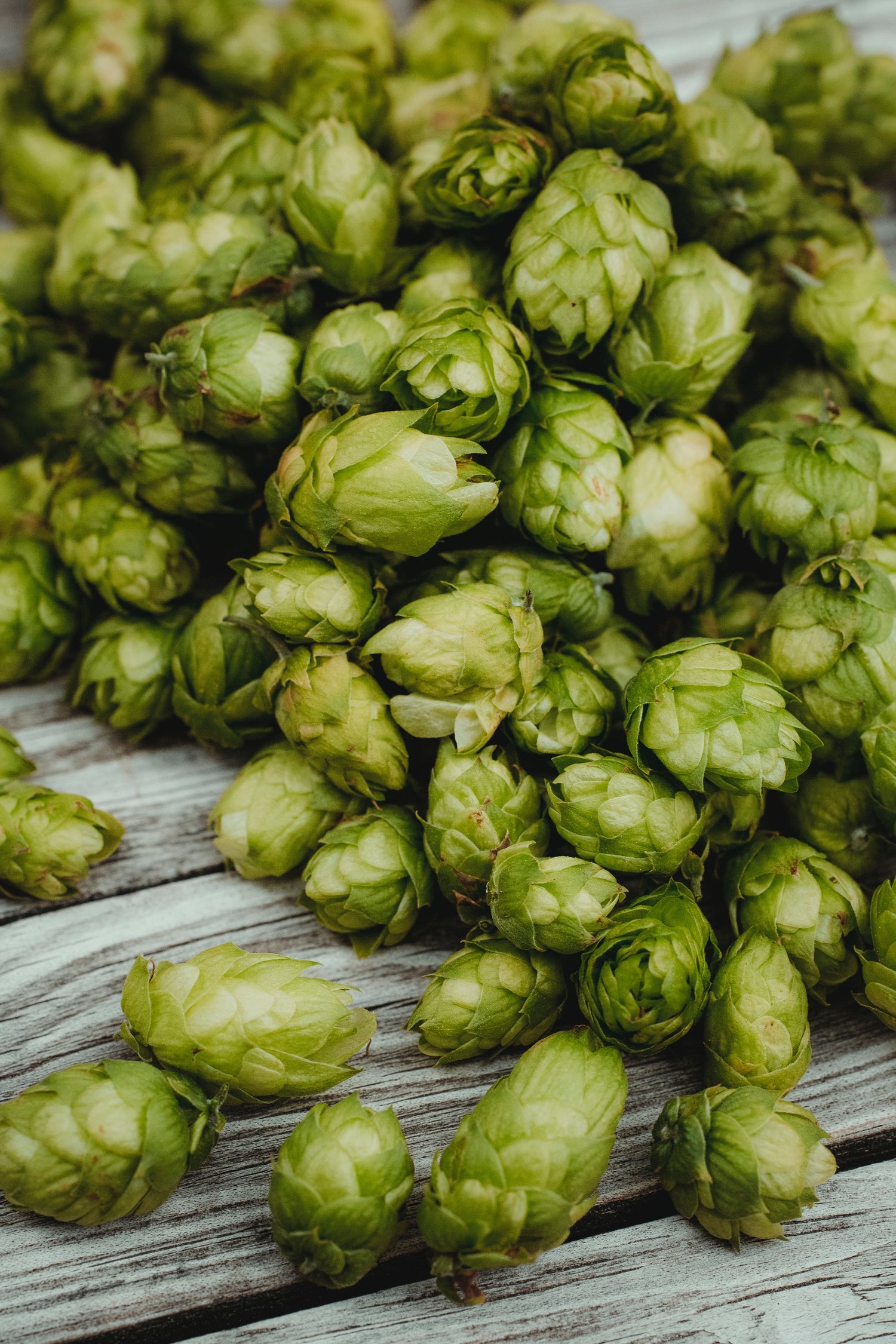
Hop
Hops (Humulus lupulus) have a long history linked to beer making. Its use dates back to Antiquity, notably among the Sumerians and Egyptians. In the Middle Ages, it spread in Europe thanks to brewing monks. Today, hops are grown around the world for their role in flavoring and preserving beer. It is also used in other industries, such as natural health products and aromatherapy.
Collapsible content
Popular usage
Hops are known for their calming and relaxing effects, promoting quality sleep and relieving anxiety. Hop cones (female inflorescences) contain bioactive compounds such as flavonoids and xanthohumols, which have antioxidant and anti-inflammatory properties. It is used primarily in the form of extracts to support mental health, reduce stress and promote good emotional balance
It is also traditionally used for the genital area, particularly in cases of painful periods, as a sedative for the genital tract.
Why we use it
Although its properties to reduce stress are all their places here, it is mainly its estrogenic properties that will interest us here.
Indeed, xanthohumol has the property of converting into 8-prenylnaringenin in the liver. It is the latter which is responsible for the estrogenic action of hops.
These phytoestrogens will help support the sudden drop in your own estrogens which occurs after childbirth. it is this sudden drop in hormones which is partly responsible for the negative emotions which can arise: blues, sadness, fatigue...
Molecules of interest
Among the active molecules, humulone and lupulone, are responsible for the characteristic bitterness of hops. They also have antibacterial properties.
Flavonoids, such as kaempferol and quercerol, have anti-inflammatory properties and interact with serotonin and melatonin receptors allowing better stress management.
Xanthohumol, leading to 8-prenylnaringenin, has phytoestrogenic properties and contributes to hormonal balance.
Bibliography
- Bruneton, J., Pharmacognosie - Phytochemistry, medicinal plants, 5th ed., revised and expanded, Paris, Tec & Doc - Éditions Médicales Internationales, 2016, 1487p.
- Jan F Stevens, Alan W Taylor, Max L Deinzer; Quantitative analysis of xanthohumol and related prenylflavonoids in hops and beer by liquid chromatography tandem mass spectrometry ; Journal of Chromatography AVolume 832, Issues 1–2, 5 January 1999, Pages 97-107
- Arne Heyerick, Stefaan Vervarcke, Herman Depypere, Marc Bracke, Denis De Keukeleire; A first prospective, randomized, double-blind, placebo-controlled study on the use of a standardized hop extract to alleviate menopausal discomfort ; Maturitas Volume 54, Issue 2 , 20 May 2006, Pages 164-175
- Kateřina Štulíková *, Marcel Karabín, Jakub Nešpor and Pavel Dostálek; Therapeutic Perspectives of 8-Prenylnaringenin, a Potent Phytoestrogen from Hops ; Molecules 2018 , 23 (3), 660; https://doi.org/10.3390/molecules23030660.
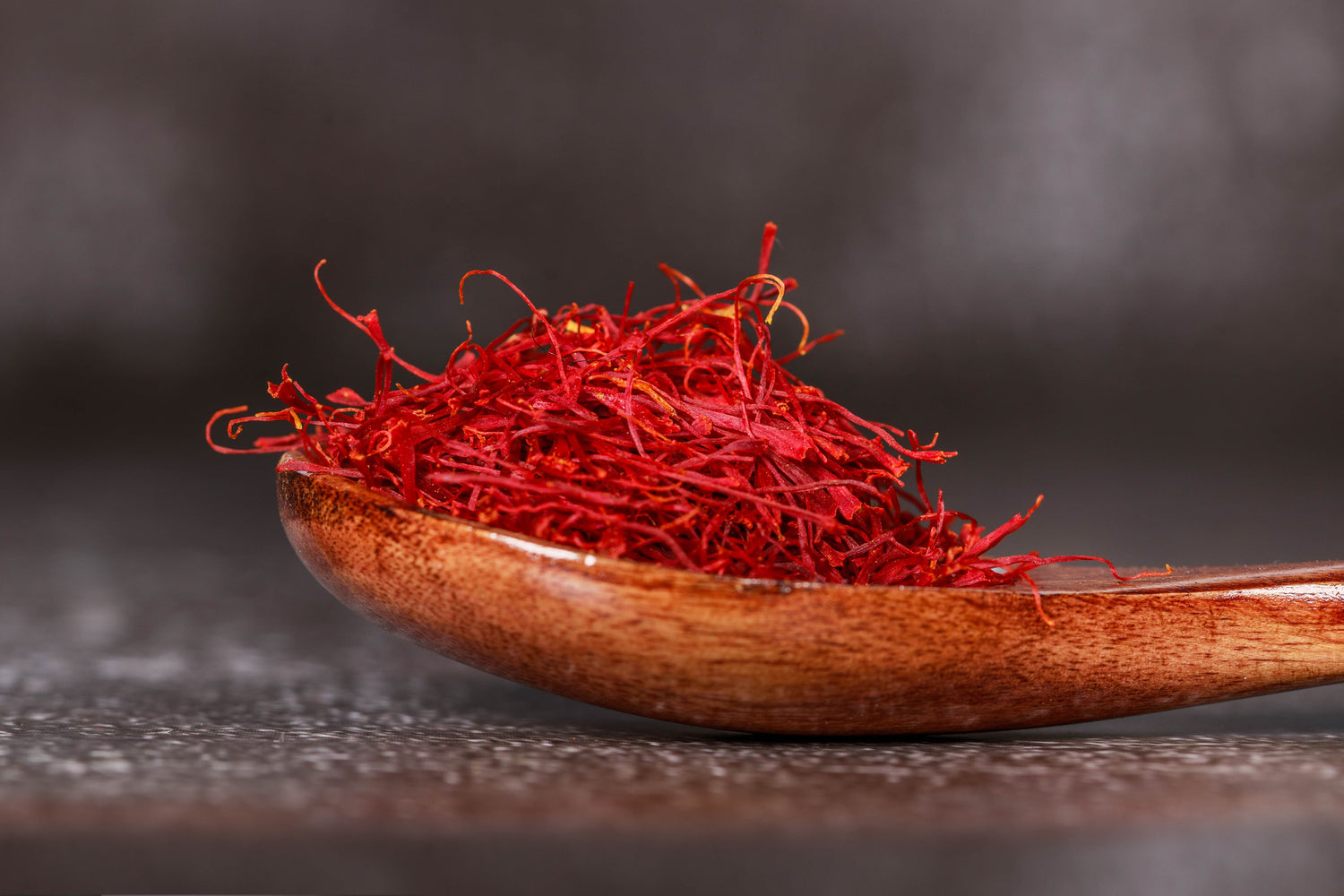
Saffron
Saffron (Crocus sativus) has a long history of use dating back to ancient times. A bulbous, perennial plant native to the Eastern Mediterranean region, it was valuable and used in religious rituals, medicine and cooking. Ancient Persians and Egyptians valued it for its medicinal properties. During the Middle Ages, the saffron trade grew in Europe, particularly in the Mediterranean regions. Today, saffron is still cultivated and appreciated in several countries, including Iran, Spain and Kashmir.
Collapsible content
Popular usage
Saffron is renowned for its beneficial health properties. It is used as a natural remedy to improve mood, reduce anxiety and depression. The use of saffron in cases of postpartum depression is studied very closely in Iran (Iran produces approximately 90% of the world's saffron).
Saffron is also known for its antioxidant and anti-inflammatory properties. It contributes to eye health, improves digestion and supports the immune system. Studies also show that saffron has positive effects on cognitive function and memory.
Why we use it
Several clinical trials have been carried out (see bibliography), aimed in particular at advancing knowledge and understanding of the potential effects of the use of saffron as an alternative therapy to treat breastfeeding mothers suffering from mild to moderate postpartum depression.
Other studies show that subjects suffering from moderate depression who took 30 mg/day of saffron extract for 6 weeks saw the expression of their depression improved.
Its action on improving the quality of sleep is also very appreciated.
Molecules of interest
The main active molecules are safranal, crocin, crocetin and picocrocin.
The pharmacologically active properties of safranal and crocin having been demonstrated, we chose to use a standardized saffron extract containing more than 4% crocin and more than 2% safranal.
Bibliography
Jamshid Tabeshpour, Farzaneh Sobhani, Seyed Alireza Sadjadi, Hossein Hosseinzadeh, Seyed Ahmad Mohajeri, Omid Rajabi, Zhila Taherzadeh, Saeid Eslami; A double-blind, randomized, placebo-controlled trial of saffron stigma (Crocus sativus L.) in mothers suffering from mild-to-moderate postpartum depression; Phytomedicine, Volume 36, 1 December 2017, Pages 145-15
Shahin Akhondzadeh, Najaf Tahmacebi-Pour, Ahamad-Ali Noorbala, Homayoun Amini, Hassan Fallah-Pour, Amir-Hossein Jamshidi, Mousa Khani; Crocus sativus L. in the treatment of mild to moderate depression: a double-blind, randomized and placebo-controlled trial ; Phytother Res. 2005 Feb;19(2):148-51. doi:10.1002/ptr.1647.
Mojtaba Khaksarian, Masoud Behzadifar, Meysam Behzadifar, Maryam Alipour, Firouzeh Jahanpanah, Tania Simona Re, Fabio Firenzuoli, Riccardo Zerbetto, Nicola Luigi Bragazzi; The efficacy of Crocus sativus (Saffron) versus placebo and Fluoxetine in treating depression: a systematic review and meta-analysis; Psychol Res Behav Manag. 2019 Apr 23;12:297-305. doi: 10.2147/PRBM.S199343. eCollection 2019.
Alireza Milajerdi, Shima Jazayeri, Elham Shirzadi, Najmeh Hashemzadeh, Atieh Azizgol, Abolghassem Djazayery, Ahmad Esmaillzadeh, Shahin Akhondzadeh; The effects of alcoholic extract of saffron (Crocus satious L.) on mild to moderate comorbid depression anxiety, sleep quality, and life satisfaction in type 2 diabetes mellitus: A double-blind, randomized and placebo controlled clinical trial; Ther Med supplement. 2018 Dec;41:196-202. doi: 10.1016/j.ctim.2018.09.023. Epub 2018 Sep 26.
CozyMum
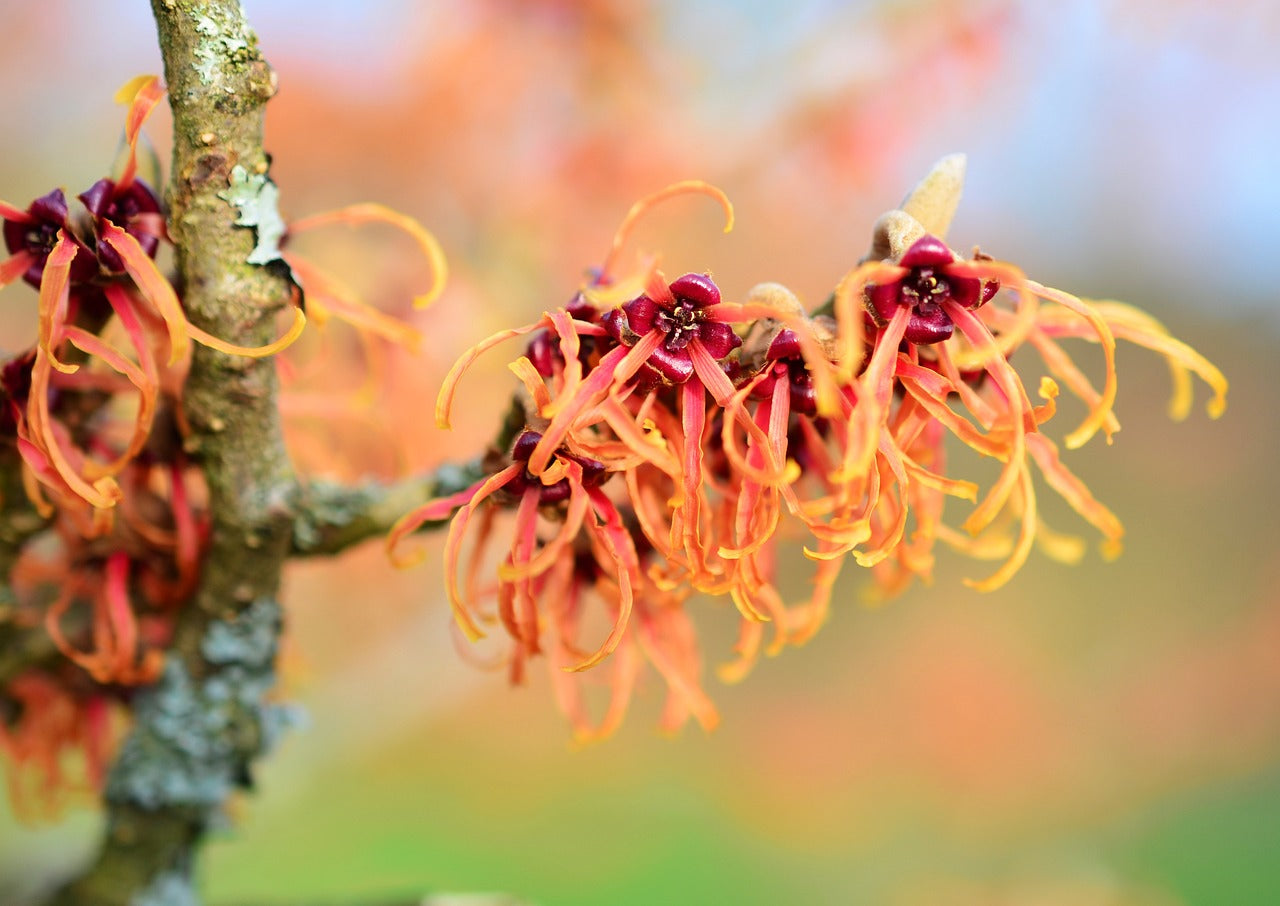
Witch Hazel
Witch hazel (Hamamelis virginiana) is a shrub native to North America. Traditionally used for medicinal purposes by Native Americans, they used different parts of the plant, including the leaves and bark.
Upon arrival, European settlers quickly adopted the use of witch hazel for its medicinal properties. Its popular use spread from the 18th century. Witch hazel was used to treat circulation problems, gastrointestinal disorders, skin conditions and feminine problems. Witch hazel is now widely cultivated in Europe.
Collapsible content
Popular usage
Traditionally used as a vasoconstrictor and venous tonic (hemorrhoids, venous congestion, heavy legs). Also used for the genital and urinary sphere, particularly in cases of dysmenorrhea, pelvic, uterine and ovarian congestion.
The World Health Organization recognizes “the traditional use of witch hazel in the treatment of minor skin lesions, bruises, inflammations of the skin and mucous membranes, hemorrhoids and varicose veins”. It also recognizes its hemostatic properties (against bleeding).
Why we use it
The astringent, vasoconstrictor and hemostatic properties of witch hazel give it great legitimacy for use in the postpartum period when the pelvic area has been heavily stressed by pregnancy and childbirth. These properties make it an analgesic, a good venous tonic, in particular by improving the elasticity of the veins. Its indication in cases of uterine, pelvic and ovarian congestion reinforces its legitimacy.
Its indication in hemorrhoidal symptomatology is also researched. During pregnancy, the increase in blood volume, hormonal changes, the pressure of the uterus on the vascular cushions and the pushing during childbirth are conducive to the appearance of hemorrhoids (38% of pregnant women according to the French National Society of Colo-Proctology).
Molecules of interest
The active ingredients of witch hazel are essentially tannins, notably witch hazel, but also flavonols and gallic acid (which would confer an antibacterial action also indicating witch hazel in the case of certain genitourinary infections).
Bibliography
- Phytotherapy: Treat yourself with plants. Doctor Jean Valnet, The pocket book, 1986
- Bruneton, J., Pharmacognosie - Phytochemistry, medicinal plants, 5th ed., revised and expanded, Paris, Tec & Doc - Éditions Médicales Internationales, 2016, 1487p.
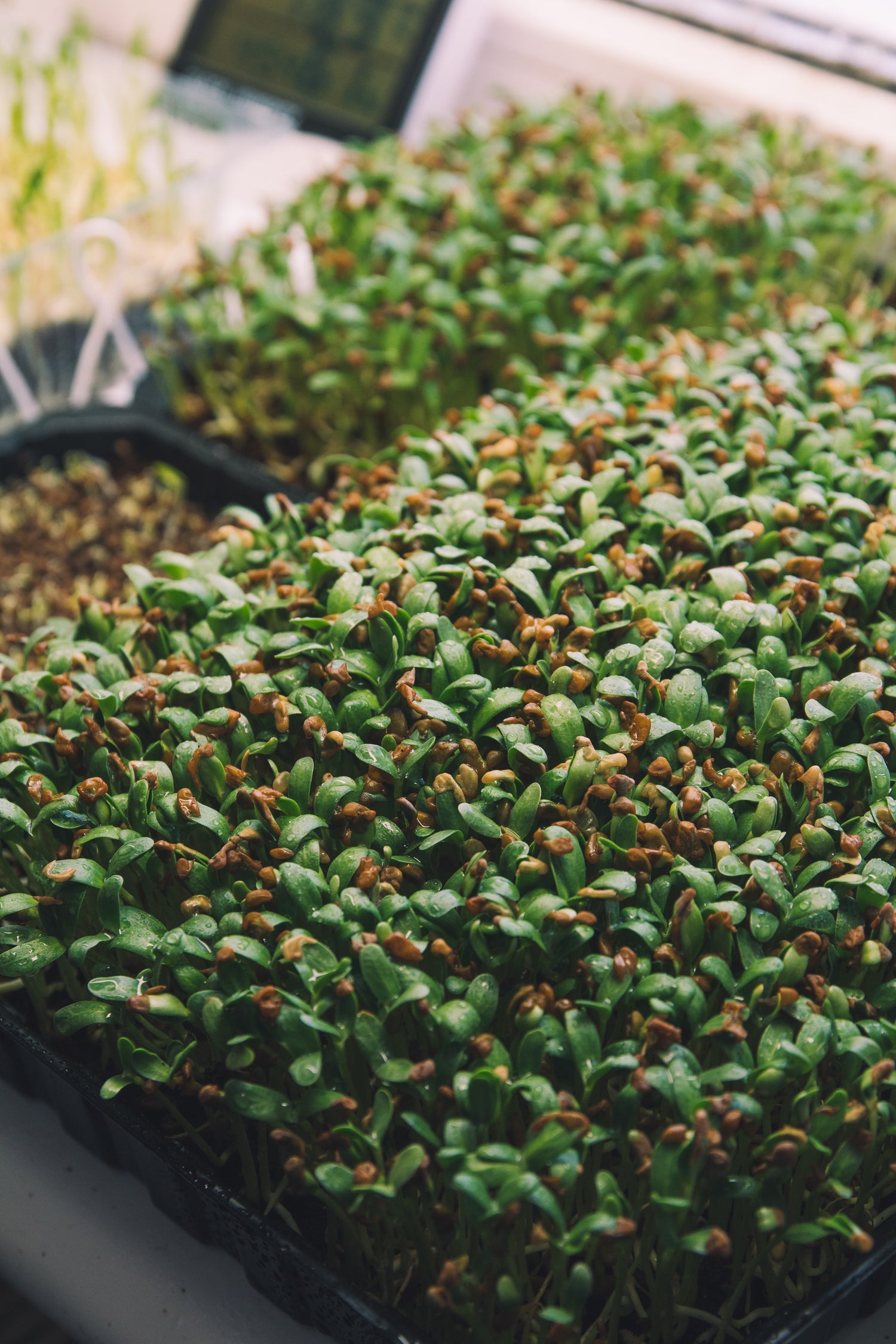
Fenugreek
Fenugreek, (Trigonella foenum-graecum), has an ancient and rich history. Native to the Middle East and South Asia, the seeds have been used for thousands of years for both food and medicinal purposes. We find it in traditional Ayurvedic medicine in India for its therapeutic properties, the Greeks and Romans used it both as a condiment and as a remedy.
Collapsible content
Popular usage
Fenugreek is traditionally used as a “blood purifier”, thanks to its direct actions on blood sugar and cholesterol. It also has anti-anemic activity.
It is also used to promote breastfeeding. It helps increase milk production in lactating women
Why we use it
The anti-anemic properties of fenugreek as well as its regulatory actions on blood sugar and cholesterol make it a prime candidate to combine with witch hazel.
We thus have a global action, improving the quality of blood vessels thanks to witch hazel, coupled with a better balance of elements circulating in the blood thanks to fenugreek.
Molecules of interest
The seeds contain many active ingredients:
Trigonelline, an alkaloid which is said to have an action on
diabetes.
4-hydroxyisoleucine which has an action on insulin.
Saponosides which promote the elimination of cholesterol.
Bibliography
- Phytotherapy: Treat yourself with plants. Doctor Jean Valnet, The pocket book, 1986
- Bruneton, J., Pharmacognosie - Phytochemistry, medicinal plants, 5th ed., revised and expanded, Paris, Tec & Doc - Éditions Médicales Internationales, 2016, 1487p.
- Anand Chourasiya, Rakesh Kumar Sahu, Mohd Azaz Khan; Anti-Anemic and Haemopoietic Evaluation of Trigonella foenum graecum (Fenugreek) in Rodent Model ; Journal of Drug Delivery & Therapeutics. 2019; 9(4s):332-337
- A Ziyyat, A Legssyer, H Mekhfi, A Dassouli, M Serhrouchni, W Benjelloun;Phytotherapy of hypertension and diabetes in oriental Morocco ; J Ethnopharmacol. 1997 Sep;58(1):45-54.doi:10.1016/s0378-8741(97)00077-9
- Catherine Ulbricht, Ethan Basch, Dilys Burke, Lisa Cheung, Edzard Ernst, Nicole Giese, Ivo Foppa, Paul Hammerness, Sadaf Hashmi, Grace Kuo, Michelle Miranda, Siddhartha Mukherjee, Michael Smith, David Sollars, Shaina Tanguay-Colucci, Nazhiyath Vijayan , Wendy Weissner; Fenugreek (Trigonella foenum graecum L. Leguminsae): an evidence-based systematic review by the natural standard research collaboration ; J Herb Pharmacother. 2007;7(3-4):143-77.doi: 10.1080/15228940802142852.
- Michael P Gabay; Galactogogues: medications that induce lactation ; J Hum Lact. 2002 Aug;18(3):274-9. doi:10.1177/089033440201800311.
- Antonia Zapantis, Jennifer G Steinberg, Lea Schilit; Use of herbals as galactagogues ; J Pharm Pract. 2012 Apr;25(2):222-31. doi:10.1177/0897190011431636.
- Jonathan Schaffir, Cheryl Czapla; Survey of lactation instructors on folk traditions in breastfeeding ; Breastfeed Med. 2012 Aug;7:230-3. doi:
10.1089/bfm.2011.0054. Epub 2012 Mar 16.
WonderMum : Cicatrisation, reconstruction musculaire, pousse des cheveux.
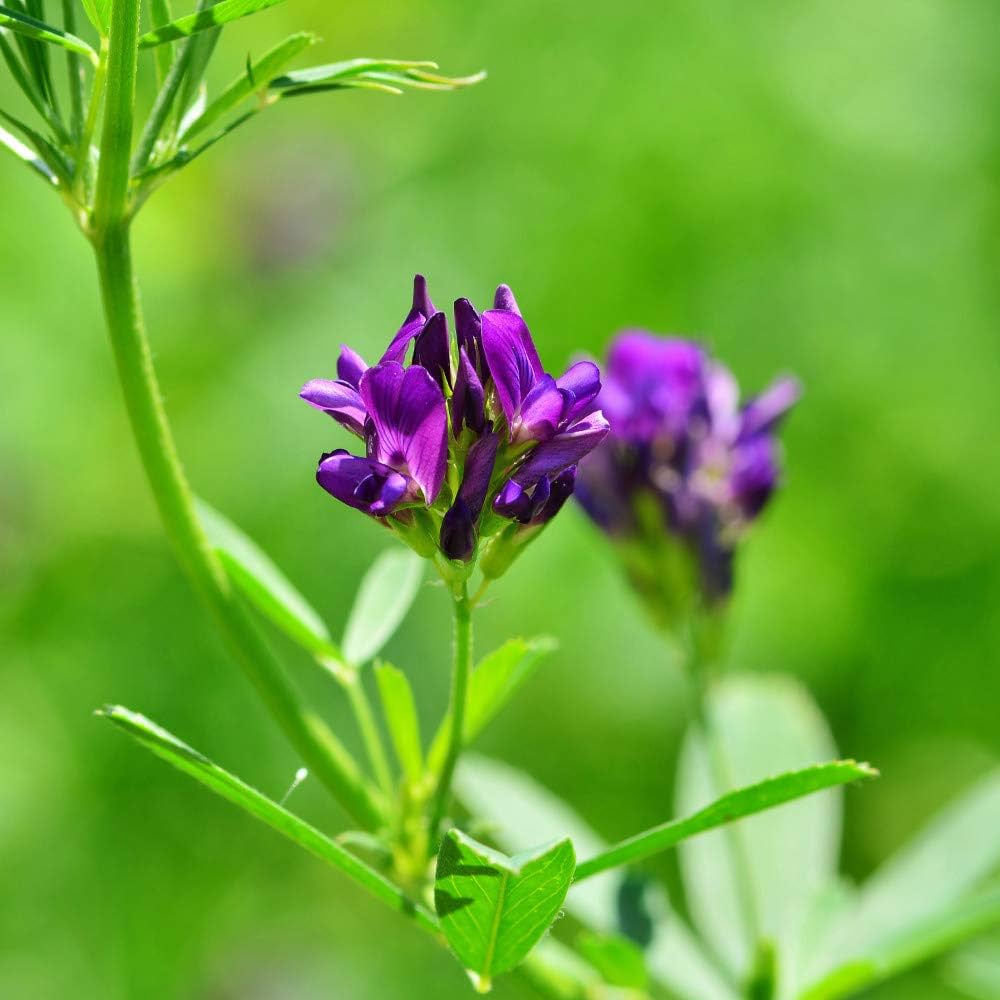
Des vitamines, des minéraux et les acides aminées essentiels : l'Alfalfa
Alfalfa, scientifically known as Medicago sativa, is an herbaceous plant belonging to the Fabaceae family. Originally from Central Asia, it has spread throughout the world. Ancient civilizations, including the Persians, Egyptians, and Romans, used alfalfa because of its rich nutrient content. This plant is also known by other names such as alfalfa
Collapsible content
Popular usage
Used during antiquity, notably in Ayurvedic medicine, it
is currently consumed in food in the form of sprouted seeds.
Alfalfa is one of the plants that contain the most vitamins and trace elements. It is appreciated for its remineralizing qualities (it contains significant quantities of iron, calcium, magnesium and potassium), revitalizing and nutritious, but also for its antihemorrhagic action, thanks to vitamin K and anti-cholesterol.
Alfalfa is also used to reduce inflammation in the body.
Remarkably, it contains 14 amino acids, including the 8 amino acids essential to health, thus allowing the biosynthesis of all proteins.
Why we use it
Childbirth is literally a physical ordeal. Such as after a sporting event, your body needs to rest and rebuild itself, for this alfalfa helps provide it with vitamins, minerals and amino acids which will allow it a speedy recovery.
Molecules of interest
Vitamins: vitamin A; thiamine (B1); riboflavin (B2); niacin (B3); vitamin B5; vitamin B6; folic acid (B9); vitamin C; vitamin K.
Minerals and trace elements: iron; calcium; magnesium; the copper ; phosphorus; selenium; boron; chromium; sodium; potassium; zinc; silicon.
Amino acids for protein biosynthesis, including the 8 essential amino acids (which our body cannot synthesize) : leucine; phenylalanine; tryptophan; threonine; isoleucine; methionine; valine; lysine.
Antioxidants and saponosides which promote the elimination of cholesterol.
Bibliography
- Gaweł E. Chemical composition of lucerne leaf extract (EFL) and its applications as a phytobiotic in human nutrition. Acta Sci Pol Technol Aliment. 2012;11(3):303-310.
- Amraie E, Farsani MK, Sadeghi L, Khan TN, Babadi VY, Adavi Z. The effects of aqueous extract of alfalfa on blood glucose and lipids in alloxan-induced diabetic rats. Interv Med Appl Sci. 2015;7(3):124-128. doi:10.1556/1646.7.2015.3.7
- Ali Esmail Al-Snafi, Hanaa Salman Khadem, Hussein Ali Al-Saedy, Ali M. Alqahtani, Gaber El-Saber Batiha, and Jafari-Sales Abolfazl, A review on Medicago sativa: A potential medicinal plant. International Journal of Biological and Pharmaceutical Sciences Archive, 2021, 01(02), 022-033
- Katarzyna Rafińska, Paweł Pomastowski, Olga Wrona, Ryszard Górecki, Bogusław Buszewski, Medicago sativa as a source of secondary metabolites for agriculture and pharmaceutical industry. Phytochemistry Letters Volume 20 , June 2017, Pages 520-539.
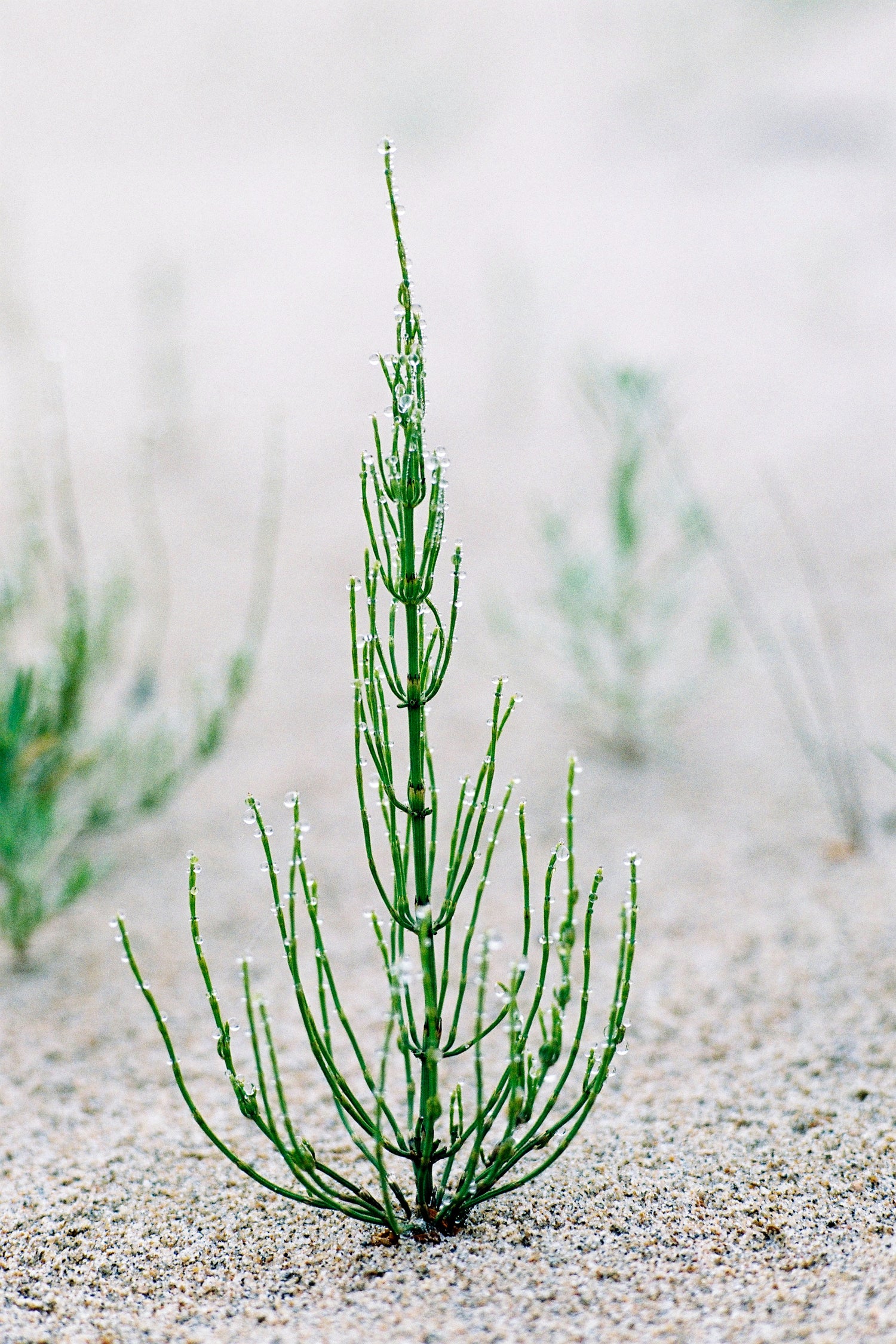
Field horsetail
The field horsetail (Equisetum arvense), is common in France and more generally widespread in the temperate and cold regions of the Northern hemisphere, it likes moist soils.
Horsetail is a very ancient primitive plant, composed mainly of sterile, green stems without leaves. Its use dates back to antiquity, consumed in food or medicine. Since the Middle Ages, its medicinal action has been widely used.
Collapsible content
Popular usage
In the Middle Ages, horsetail was used to treat wounds, reduce inflammation and promote healing. It was also used to strengthen bones and joints.
Still widely used today in herbal medicine and herbalism, its anti-inflammatory and diuretic effects have been confirmed via clinical trials, favoring its use during urogenital infections.
Rich in silica, minerals and antioxidants, horsetail is also used for its remineralizing properties, to strengthen teeth, nails, hair and the bone system.
The European Medicines Agency also reports traditional use in cases of post-traumatic and antihemorrhagic edema.
Why we use it
The remineralizing properties of horsetail, combined with its anti-inflammatory and antihemorrhagic properties make it a very good complement to alfalfa during this period of repair and strengthening of the body, bringing a little extra to your nails and hair.
Molecules of interest
Mostly silica in soluble form; sterols, cinnamic acids and flavonoids.
Horsetail is also rich in vitamin C
Bibliography
- Phytotherapy: Treat yourself with plants. Doctor Jean Valnet, The pocket book, 1986
- Bruneton, J., Pharmacognosie - Phytochemistry, medicinal plants, 5th ed., revised and expanded, Paris, Tec & Doc - Éditions Médicales Internationales, 2016, 1487p.
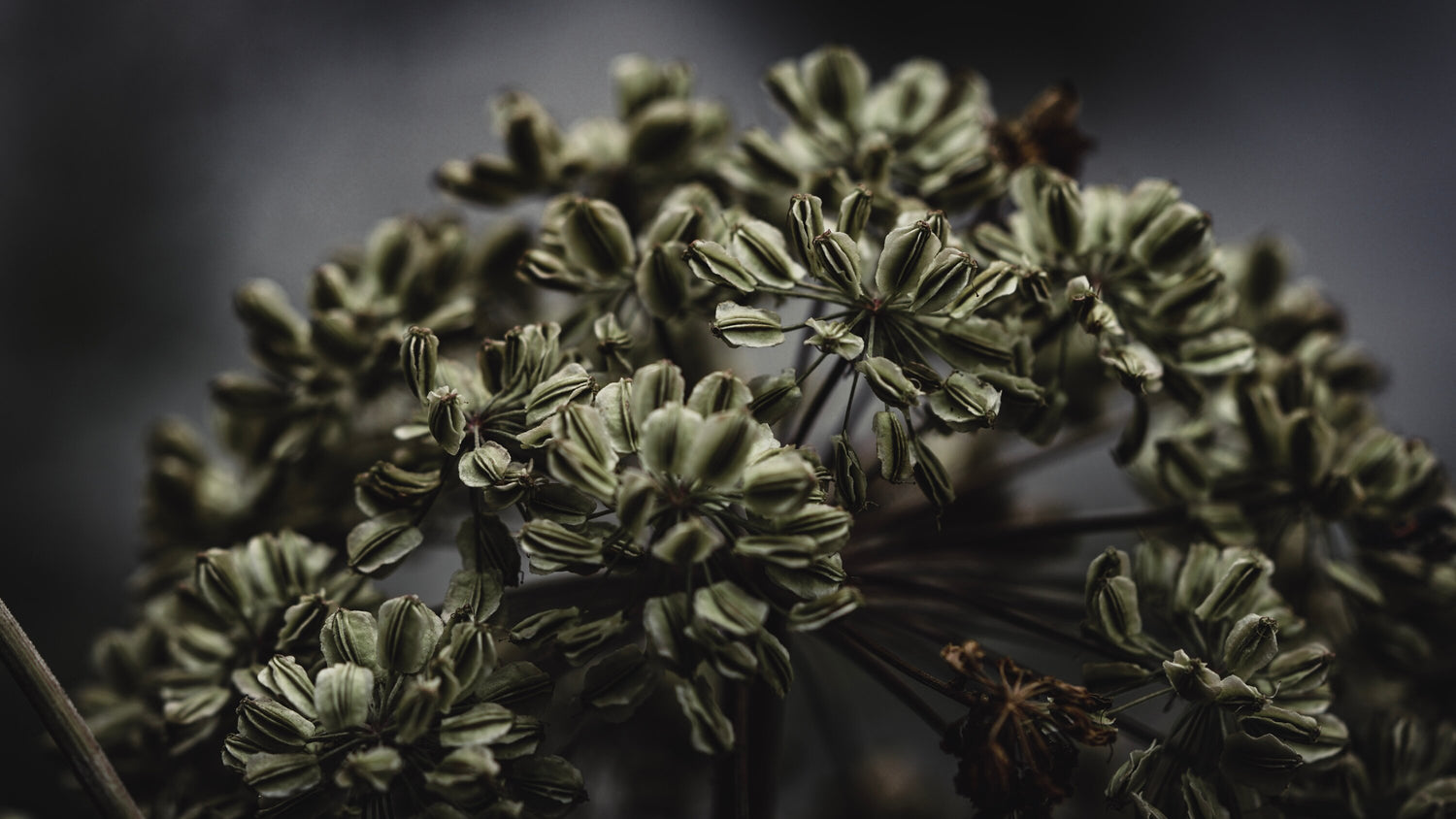
Angelic
Angelica (Angelica archangelica), is a herbaceous plant native to the northern regions of Eurasia, now acclimated throughout Europe, in humid places. Also called angel weed, it is its root, richer in chemical active ingredients, that we use.
Collapsible content
Popular usage
The use of angelica spread in France during the 12th century, it was then used by monks for its "anti-plague" action. More recently the aerial parts are also used in confectionery and as a liqueur for their digestive and tonic properties.
Angelica root is a good tonic for general health, against fatigue and weakening of the body. Its other biological activities are, among others, anti-inflammatory, gastroprotective and stimulating of the digestive system.
Its action on the uterine sphere is also described in traditional medicine in cases of leukorrhea and to relieve uterine cramps.
Why we use it
We use angelica root in synergy with alfalfa and horsetail, mainly for its toning action to fight against the weakening of the body.
Its anti-inflammatory action and its action on the uterine sphere should also be remembered.
Molecules of interest
Angelica root is very rich in terpenes and characterized by the presence of lactones.
Bibliography
- Phytotherapy: Treat yourself with plants. Doctor Jean Valnet, The pocket book, 1986
- Bruneton, J., Pharmacognosie - Phytochemistry, medicinal plants, 5th ed., revised and expanded, Paris, Tec & Doc - Éditions Médicales Internationales, 2016, 1487p.
- Bhat, ZA; Kumar, Dinesh; Shah, M.Y .; Angelica archangelica Linn. is an angel on earth for the treatment of diseases ; International Journal of Nutrition, Pharmacology, Neurological Diseases | January 2011 | Vol 1 | Issue 1
Nos best-sellers
-

 Sold out
Sold outEnergyBoost+
Vendor:Pack Anti-Fatigue -5%4.52 / 5.0
(81) 81 total reviews
Regular price €60,80Regular priceUnit price / per€64,00Sale price €60,80Sold out -

 Sold out
Sold outHairBoost+
Vendor:PACK CHEVEUX -5%4.52 / 5.0
(63) 63 total reviews
Regular price €60,80Regular priceUnit price / per€64,00Sale price €60,80Sold out -

 Sold out
Sold outTHE SuperMum
Vendor:Le TRIO post-partum -10%4.69 / 5.0
(56) 56 total reviews
Regular price €86,40Regular priceUnit price / per€96,00Sale price €86,40Sold out
